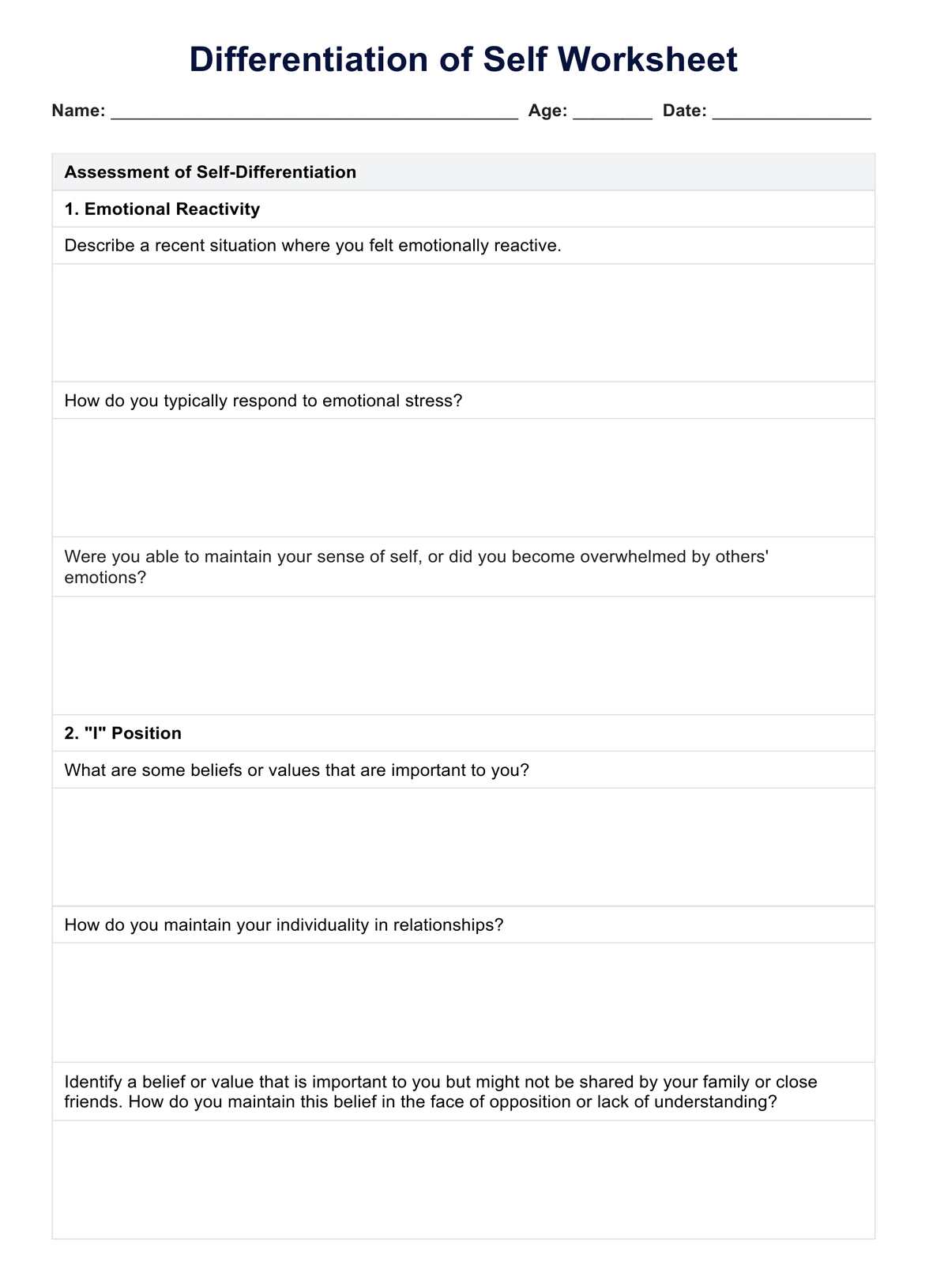Differentiation of self is crucial because it determines an individual's ability to maintain their identity and emotional stability in close relationships. Higher levels of differentiation allow for healthier interpersonal interactions and greater personal resilience.

Differentiation of Self Worksheet
Try the Differentiation of Self Worksheet, which enhances emotional and relational health. Gain insights into personal development and improved interactions.
Use Template
Differentiation of Self Worksheet Template
Commonly asked questions
The main components of differentiation of self include emotional reactivity, "I" position, emotional cutoff, and fusion with others. Each component affects how individuals relate to others and manage their emotional lives.
An example of differentiation of self is when an individual can express their own opinions and needs in a relationship without succumbing to pressure to conform or experiencing overwhelming anxiety.
EHR and practice management software
Get started for free
*No credit card required
Free
$0/usd
Unlimited clients
Telehealth
1GB of storage
Client portal text
Automated billing and online payments











